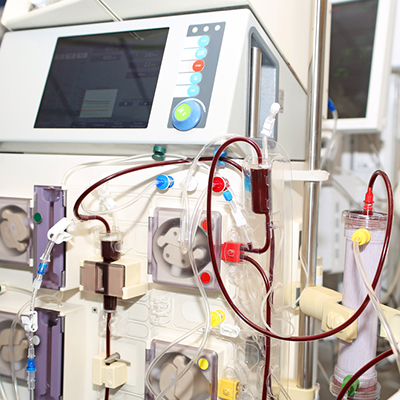Hemodiafiltration Dialysis in Anantapur
Despite notable advancements in medical technology and techniques related to dialytic renal replacement therapies, the rates of morbidity and mortality remain alarmingly high among individuals with end-stage kidney disease, with many interventional studies producing unsatisfactory outcomes. Hemodiafiltration, a dialysis technique that has been utilized in clinical settings for several years, merges the core principles of hemodialysis and Hemodiafiltration Dialysis in Anantapur — namely diffusion and convection. This method has demonstrated a beneficial effect on mortality rates, particularly when administered in a high-volume mode, which serves as a proxy for a substantial convective dose. Achieving elevated substitution volumes during dialysis sessions is influenced not only by patient-specific factors but also by the characteristics of the dialyzer (membrane) and the capabilities of the hemodiafiltration machine employed.
Clinical Advantages of HDF

HDF has shown a wide range of clinical advantages that significantly influence the cardiovascular health and overall well-being of patients receiving this treatment at Hemodiafiltration Hospital in Anantapur. It not only lowers cardiovascular risk but also improves survival rates among individuals. Importantly, HDF offers enhanced management of several vital health indicators
- It effectively addresses hyperphosphatemia, improves inflammatory conditions, and optimizes the erythropoietin response for better management of anemia.
- Additionally, HDF promotes greater hemodynamic stability and provides superior control over fluid overload, left ventricular hypertrophy, and arterial endothelial function, which collectively diminish the risk of serum calcification.
- Furthermore, the incidence of neurological symptoms such as restless leg syndrome, polyneuropathy, and itching—often linked to the accumulation of medium to large-sized molecules—is significantly reduced.
- HDF also contributes to alleviating joint pain and dialysis-related amyloidosis, thereby improving the overall quality of life and satisfaction among patients.
- Moreover, this treatment notably decreases levels of DNA damage and enhances antioxidant status, highlighting its diverse positive effects on patient health and well-being.
The safety profile of HDF has also been established and is available for Best Dialysis Treatment in Anantapur. Concerns regarding the potential removal of beneficial substances, such as vitamins and amino acids, have not been validated.
A wide variety of dialyzers is offered in the market, each possessing distinct characteristics that influence their performance. Key factors such as KoA, cutoff, and hydraulic permeability dictate the appropriate application of each filter and guide the prescription process. Certain techniques at Kidney care hospital in Anantapur may necessitate specific configurations and designs. With a comprehensive understanding of the properties of membranes and dialyzers, nephrologists are equipped to select and prescribe the most suitable device and treatment tailored to the unique clinical requirements of each patient. Should any intolerance or complications arise, it is essential to meticulously review and optimize treatment parameters by Nephrologist in Anantapur, Dr. M. Surendra Babu prior to transitioning to an alternative device.
